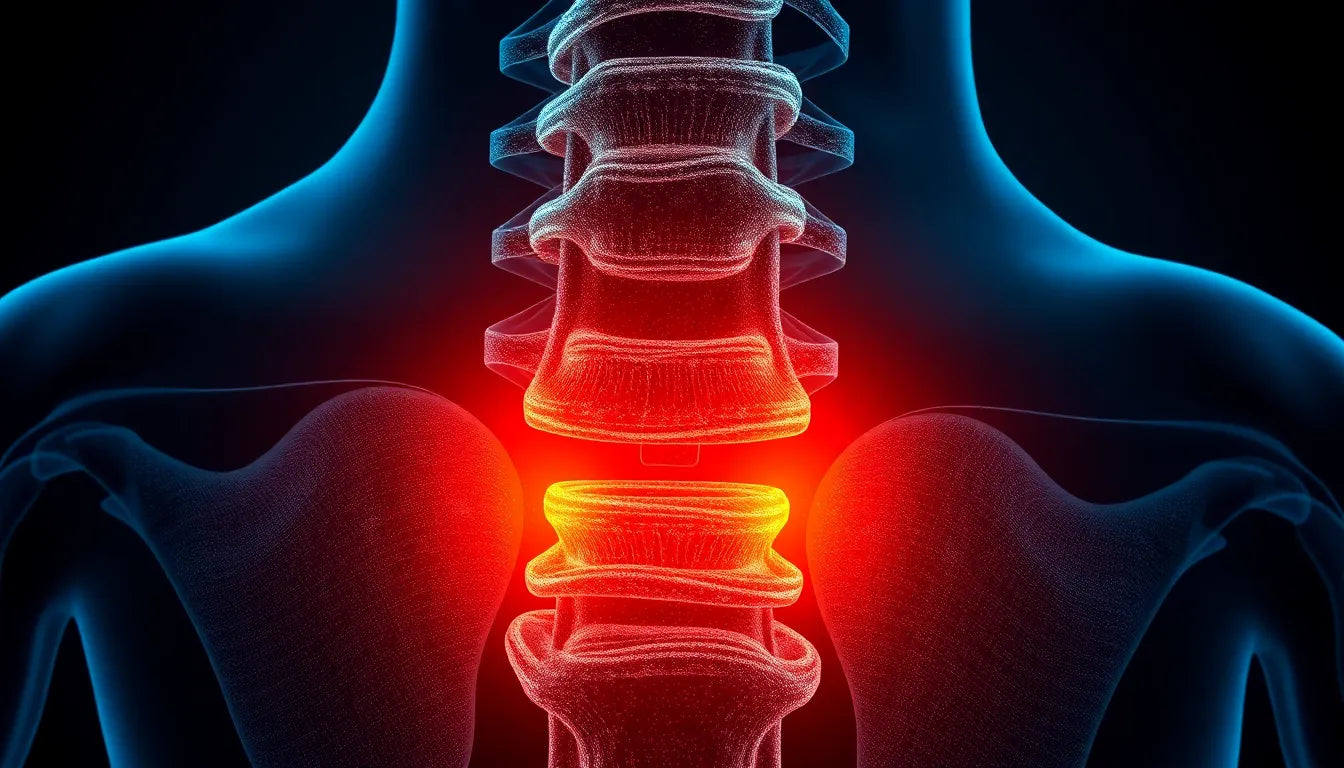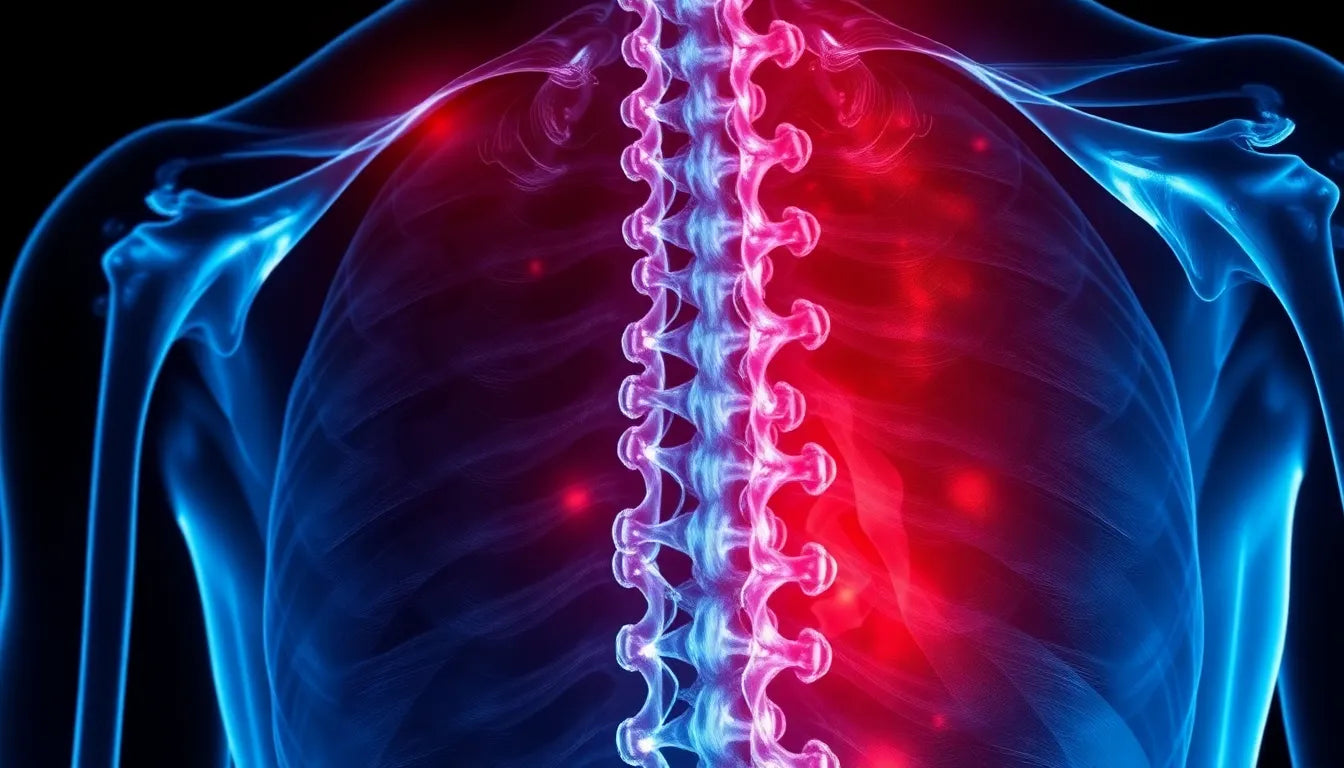Back pain is a common ailment that affects millions of people worldwide, often stemming from issues related to the spine. Among the myriad of causes, disc-related problems are particularly prevalent, leading many to encounter terms like "slipped disc" and "herniated disc." While these terms are frequently used interchangeably, they represent distinct conditions that require different approaches to treatment and management.
Understanding slipped disc and herniated disc
The term "slipped disc" is widely recognized but often misunderstood. It conjures an image of a spinal disc moving out of place, yet this is not an accurate depiction of what occurs. In reality, discs cannot slip out of their position between the vertebrae. Instead, this colloquial term is often used to describe a condition more accurately referred to as a herniated disc.
A herniated disc, on the other hand, is a medical condition where the outer layer of a spinal disc, known as the annulus fibrosus, tears or ruptures. This allows the inner gel-like core, the nucleus pulposus, to protrude or leak into the spinal canal. This protrusion can irritate or compress nearby spinal nerves, leading to symptoms such as pain, numbness, or weakness in the back or limbs.
Why understanding the difference matters
Grasping the distinction between a slipped disc and a herniated disc is crucial for several reasons. Firstly, it aids in obtaining an accurate diagnosis, which is the cornerstone of effective treatment. Misunderstanding or misdiagnosing these conditions can lead to inappropriate treatments that may not address the underlying issue, potentially prolonging discomfort and delaying recovery.
Moreover, understanding these differences empowers individuals to engage more effectively with healthcare providers. When patients are informed, they can ask pertinent questions, understand their treatment options better, and make informed decisions about their health care. This knowledge not only enhances patient satisfaction but can also improve recovery outcomes by ensuring that the most effective treatments are pursued.
In conclusion, while the terms slipped disc and herniated disc are often used interchangeably, they describe different aspects of spinal disc issues. Recognizing these differences is essential for accurate diagnosis and effective treatment, ultimately leading to better management of back pain and improved quality of life.
Definitions and distinctions: slipped disc vs herniated disc
When discussing spinal disc issues, it's vital to understand the specific terms used and their implications. The term "slipped disc" is often used in everyday language but lacks precision in medical contexts. It suggests that a disc has moved out of place, which is not the case. Discs are securely positioned between the vertebrae, and they do not slip. Instead, "slipped disc" is a layman's term that generally refers to either a herniated disc or, less commonly, a bulging disc.
A herniated disc, on the other hand, is a well-defined medical condition. It occurs when there is a tear in the annulus fibrosus, the tough outer layer of the disc. This tear allows the nucleus pulposus, the disc's soft inner core, to protrude into the spinal canal. This protrusion can press on spinal nerves, leading to symptoms such as pain, numbness, or weakness, depending on the location of the herniation.
Comparing herniated discs and bulging discs
It's also important to differentiate between herniated discs and bulging discs, as these terms describe different conditions. A bulging disc occurs when the nucleus pulposus pushes against the annulus fibrosus, causing the disc to bulge outward but without tearing the outer layer. This condition is often part of the natural aging process and may not cause symptoms unless the bulge compresses a nerve.
In contrast, a herniated disc involves a rupture or tear in the annulus fibrosus, allowing the nucleus pulposus to escape its confines. This can lead to more severe symptoms due to the direct irritation or compression of spinal nerves. Understanding these differences is crucial for determining the appropriate treatment and management strategy.
Symptoms and causes of disc issues
Both herniated and bulging discs can manifest similar symptoms, although the severity and nature of these symptoms can vary. Common symptoms include back pain, stiffness, and radiating pain or numbness in the limbs. The specific symptoms often depend on the location and extent of the disc issue. For instance, a herniated disc in the lumbar region may cause pain that radiates down the leg, a condition known as sciatica.
The causes of these disc problems are multifaceted. Aging is a primary factor, as the discs naturally degenerate over time, losing water content and elasticity, which makes them more susceptible to injury. Other contributing factors include repetitive strain, poor posture, obesity, and sedentary lifestyles. Acute injuries, such as lifting heavy objects incorrectly, can also lead to disc herniation.
Visualizing the differences
To better understand the distinctions between herniated and bulging discs, visual aids such as diagrams or tables can be incredibly helpful. These visuals can illustrate the structural differences, highlight the symptoms associated with each condition, and outline potential treatment options. Such aids are valuable for both patients and healthcare providers to communicate effectively about the condition and its management.
In summary, while the terms slipped disc and herniated disc are often used interchangeably, they describe different conditions that require distinct approaches to treatment. Understanding these differences is crucial for accurate diagnosis and effective management, ultimately leading to improved outcomes for individuals suffering from disc-related back pain.
Treatment and diagnosis of disc issues
When it comes to treating disc-related issues, the approach often begins with conservative measures. Rest is a critical first step, allowing the affected area to heal naturally without further strain. Applying ice can help reduce inflammation and alleviate pain, while over-the-counter pain medications can provide additional relief. Physical therapy is also a cornerstone of conservative treatment, as it helps strengthen the muscles surrounding the spine, improving stability and reducing the risk of future injuries.
In cases where conservative treatments do not provide sufficient relief, more advanced interventions may be necessary. Spinal injections, such as epidural steroid injections, can help reduce inflammation and pain by delivering medication directly to the affected area. Surgery is considered a last resort and is typically reserved for severe cases where other treatments have failed, or when there is significant nerve compression leading to symptoms like muscle weakness or loss of bladder control.
Accurate diagnosis of disc issues is crucial for determining the appropriate treatment plan. Healthcare providers often begin with a physical examination, assessing symptoms and evaluating the range of motion in the affected area. Imaging tests, such as MRI or X-rays, provide detailed views of the spine, helping to identify the specific nature of the disc problem. In some cases, selective injections may be used to pinpoint the exact source of pain, further guiding treatment decisions.
Frequently Asked Questions
What is the difference between a slipped disc and a herniated disc?
A "slipped disc" is a colloquial term often used to describe a herniated disc. Despite the name, discs do not actually slip out of place. A herniated disc occurs when the outer layer of the disc tears, allowing the inner material to leak out and potentially irritate nearby nerves.
Can a bulging disc turn into a herniated disc?
Yes, a bulging disc can progress to a herniated disc if the outer layer of the disc tears, allowing the inner nucleus pulposus to protrude into the spinal canal. This progression can lead to increased symptoms and may require different treatment approaches.
What lifestyle changes can help prevent disc problems?
To reduce the risk of disc problems, it is important to maintain a healthy lifestyle. Regular exercise can strengthen the muscles supporting the spine, while maintaining a healthy weight reduces pressure on the discs. Additionally, using proper lifting techniques and avoiding prolonged sitting can help prevent disc degeneration.
When should I see a doctor for back pain?
If you experience severe back pain, numbness, or weakness, or if symptoms persist despite home treatment, it is important to seek medical attention. Early diagnosis and treatment can prevent further complications and improve recovery outcomes.
Understanding the nuances between slipped discs and herniated discs is essential for effective diagnosis and treatment. By recognizing the symptoms and knowing when to seek medical advice, individuals can take proactive steps towards managing their back health and improving their quality of life.
Sources
- Spine-health. "Slipped Disc vs. Herniated Disc."
- Albackcare. "Herniated Disc vs. Bulging Disc: What's the Difference?"
- Neurosurgery One. "Bulging vs. Herniated Disc: Understanding the Differences."
- Herrman and Herrman. "Bulging vs. Herniated Discs: What You Need to Know."
- Cleveland Clinic. "Herniated Disk: Symptoms, Causes, and Treatment."























